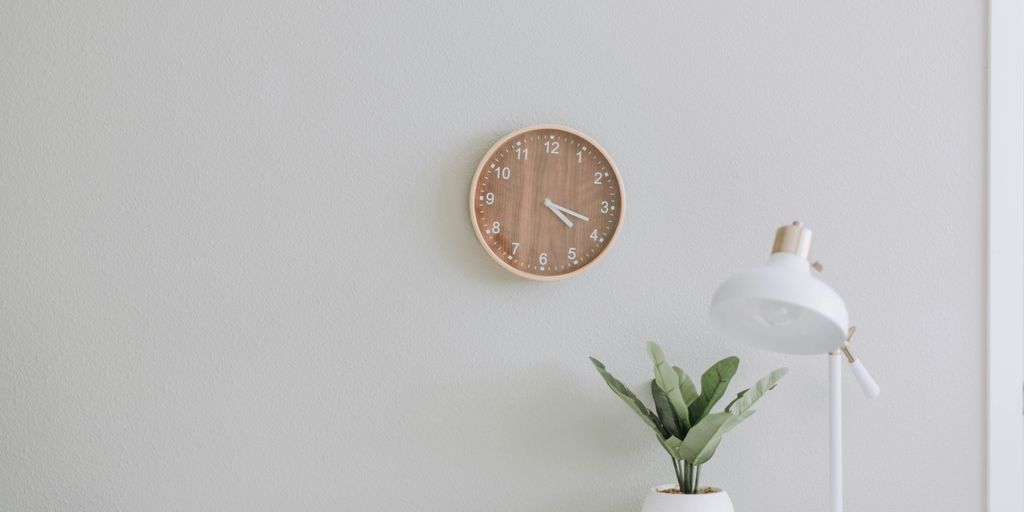Home & Family
Your Essential Extreme Decluttering Checklist for a Fresh Start

Are you feeling overwhelmed by clutter in your home? You’re not alone. Many people struggle with keeping their spaces organized and tidy. But don’t worry! This extreme decluttering checklist will guide you through the process step by step, making it easier to reclaim your space and enjoy a fresh start. Whether you’re tackling a single room or your entire house, this checklist has got you covered!
Key Takeaways
- Decluttering is about making your space functional and comfortable.
- Set achievable goals and stick to a schedule for decluttering.
- Use simple techniques like the Four-Box Method to stay organized.
- Focus on one room at a time to avoid feeling overwhelmed.
- Establish daily habits to maintain a clutter-free environment.
Understanding The Concept Of Decluttering

Defining Clutter
Okay, so what is clutter, really? It’s more than just a messy room. Clutter is anything that takes up space without serving a purpose or bringing you joy. It’s the stuff that weighs you down, both physically and mentally. What one person considers a treasure, another might see as total junk. Think about that pile of old magazines you swear you’ll read someday, or that kitchen gadget you used once and then shoved to the back of the cupboard. That’s clutter!
The Importance Of Decluttering
Why bother decluttering? Well, for starters, it can seriously improve your living space. Imagine a home where everything has its place, and you can actually find what you need when you need it. But it’s not just about aesthetics. Decluttering can also free up your time, reduce stress, and even boost your productivity. Think of it as a fresh start for your home and your mind. Plus, you might even find some lost treasures in the process! Don’t buy storage boxes before you organize.
How Decluttering Affects Your Life
Decluttering isn’t just a one-time thing; it’s a lifestyle change that can have a ripple effect on your entire life. A decluttered home often leads to a decluttered mind, which can improve your focus, reduce anxiety, and give you a greater sense of control. It’s about creating a space that supports your goals and well-being, rather than holding you back. It might be hard at first, but decluttering gets easier over time. Here’s how it can impact you:
- Improved Mental Clarity: Less visual noise means less stress.
- Increased Productivity: Easier to find what you need, when you need it.
- Better Sleep: A calm environment promotes restful sleep.
Mental Health Benefits Of Decluttering

It’s easy to underestimate how much our surroundings impact our mental state. A cluttered space isn’t just visually unappealing; it can actually contribute to stress, anxiety, and a general feeling of being overwhelmed. But the good news is, decluttering can have a significant positive impact on your mental well-being. It’s not just about tidying up; it’s about creating a more peaceful and functional environment that supports your mental health. Let’s explore some of the key mental health benefits you can experience when you declutter.
Reducing Anxiety
Clutter can be a major source of anxiety. When your home is filled with unnecessary items, it can feel like there’s a constant visual reminder of unfinished tasks and unfulfilled obligations. This can lead to a sense of being overwhelmed and stressed. Decluttering helps to reduce this anxiety by creating a more organized and calming environment. When you remove the excess, you create space for your mind to breathe. It’s like taking a weight off your shoulders, allowing you to feel more relaxed and at ease in your own home. Think of it as a form of stress reduction.
Improving Focus
Have you ever tried to work in a messy environment? It’s tough! Clutter can be incredibly distracting, making it difficult to concentrate on the task at hand. When your surroundings are disorganized, your brain has to work harder to filter out the unnecessary stimuli. This can lead to mental fatigue and decreased productivity. Decluttering helps to improve focus by creating a more streamlined and organized workspace. When you remove the distractions, you can concentrate more easily and get more done. It’s like clearing a path for your thoughts, allowing you to focus on what’s important.
Creating A Sense Of Control
Life can often feel chaotic and unpredictable. But decluttering can provide a sense of control in the midst of the chaos. When you take the time to organize your belongings and create a more functional space, you’re taking charge of your environment. This can be incredibly empowering, helping you to feel more grounded and in control of your life. It’s like creating a sanctuary where you can retreat from the stresses of the outside world. And when you feel more in control of your surroundings, you’re better equipped to handle the challenges that life throws your way.
Preparing For Your Decluttering Journey
Before you start throwing things out, it’s a good idea to get yourself ready. It’s like prepping for a marathon – you wouldn’t just show up and start running, right? You need a plan, some supplies, and a schedule. Let’s get into it.
Setting Realistic Goals
Okay, so you want a clutter-free home. Awesome! But trying to declutter everything in one weekend? Probably not going to happen. Start small and be realistic. Maybe tackle one drawer, one shelf, or one corner of a room. It’s about progress, not perfection. Think about what you actually have time for and what you can realistically achieve. For example, instead of saying "I’ll declutter the entire basement," try "I’ll spend 30 minutes sorting through the boxes in the basement." That feels way less overwhelming, doesn’t it? Remember, realistic goals are key to avoiding burnout.
Gathering Necessary Supplies
Time to raid your storage closet! You’ll need a few things to make the decluttering process smoother. Think about it like this: you wouldn’t start painting without brushes and paint, would you? Here’s a quick list:
- Boxes: For sorting items into categories like "keep," "donate," and "trash."
- Trash bags: For the stuff that’s definitely going in the garbage.
- Cleaning supplies: Because once you declutter, you’ll probably want to wipe things down.
- Labels and markers: To clearly mark your boxes.
- Gloves: Especially if you’re dealing with dusty or grimy items.
Having these supplies on hand will save you time and keep you from getting sidetracked mid-declutter.
Creating A Decluttering Schedule
Now, let’s talk about time. When are you actually going to do this? If you just say "I’ll declutter sometime," it’s probably not going to happen. Block out specific times in your calendar, just like you would for any other important appointment. Maybe it’s an hour on Saturday mornings, or 30 minutes after work each day. Whatever works for you, write it down and stick to it. Think of it as a date with your clutter – a date you can’t cancel! And remember, even 15 minutes a day can make a difference. The key is consistency. If you have a solid system, you’ll be more likely to stick to your schedule.
Room-By-Room Decluttering Strategies
Living Room Essentials
The living room, often the heart of the home, can quickly accumulate clutter. Start by tackling obvious areas like bookshelves and magazine racks.
- Clear out any bookcases and magazine racks.
- Reduce paper clutter, like mail and newspapers.
- Remove electronics that you don’t regularly use.
- Fold throw blankets (and ridding yourself of unused ones).
- Giving commonly used items a permanent home, such as remote controls, books and magazines
Kitchen Organization Tips
The kitchen is another high-traffic area that requires regular attention. Begin by clearing out your pantry and refrigerator. Toss expired items and consolidate duplicates. Here’s a quick rundown:
- Clear out cupboards and drawers and dispose of any out-of-date foods and unused utensils
- Clean out the fridge and dispose of any out-of-date foods
- Move items off countertops and into storage spaces
- Put pots and pans in a permanent home
- Purge drawers and cupboards of old cleaning supplies and dish towels
Don’t forget to sort through your bakeware and dishes. Keep only what you use regularly. Store seasonal or rarely used items in self-storage.
Bedroom Decluttering Techniques
Bedrooms should be a sanctuary, but they often become a catch-all for clothes, books, and other items. Start with your closet. Remove all clothes. Donate or discard items that don’t fit or you don’t wear. Organize by season and type. Consider these steps:
- Sort shoes by type and season. Keep frequently worn pairs accessible. Store others in clear boxes or a shoe rack.
- Go through your bags and totes. Donate or discard any you don’t use. Store the rest neatly.
- Clear off the bedside table. Keep only essentials like a lamp, clock, and a book. Use drawers to hide other items.
- Use bins or drawers for under-bed storage. Store off-season clothes or extra bedding here.
- Donating items that no longer fit or haven’t been worn in a year is a great way to free up space.
Effective Decluttering Techniques
Decluttering can feel overwhelming, but breaking it down into manageable techniques makes the process much easier. Let’s explore some effective methods to help you achieve a clutter-free home. These techniques are designed to be flexible, so feel free to adapt them to suit your specific needs and preferences.
The Four-Box Method
The Four-Box Method is a simple yet powerful way to categorize your belongings. Grab four boxes and label them: Keep, Donate, Trash, and Relocate. This method forces you to make decisions about each item, preventing you from mindlessly holding onto things you don’t need. It’s a great way to start because it provides a clear framework for sorting through your possessions.
Here’s how it works:
- Gather Your Supplies: Get your four boxes and label them clearly.
- Choose a Space: Start with a small area, like a drawer or a shelf.
- Sort Each Item: Pick up each item and decide which box it belongs in.
- Process the Boxes: Once you’ve sorted everything, take action! Put the "Keep" items away, donate the "Donate" items, trash the "Trash" items, and relocate the "Relocate" items to their proper places. This is a great way to start your decluttering journey.
The 20/20 Rule
The 20/20 rule is perfect for those items you’re on the fence about. The basic idea is this: if you can replace an item for less than $20 and in less than 20 minutes, you can probably get rid of it. This rule helps you overcome the fear of regret, especially for inexpensive or easily replaceable items. It’s surprisingly effective for clearing out duplicates or things you rarely use.
Consider these scenarios:
- Scenario 1: A basic phone charger. Can you replace it for under $20 in under 20 minutes? Probably. Toss it if you don’t need it.
- Scenario 2: A specialized kitchen gadget. Can you easily replace it? Maybe not. Think twice before discarding.
The One-Year Rule
The One-Year Rule is straightforward: if you haven’t used an item in the past year, it’s time to let it go. This rule is especially helpful for clothing, accessories, and household items that tend to accumulate dust in the back of closets and drawers. It forces you to be honest about what you actually use versus what you’re simply holding onto
Maintaining A Clutter-Free Home
So, you’ve conquered the clutter beast! Congrats! But the real challenge? Keeping it at bay. It’s not a one-time thing; it’s more like a lifestyle adjustment. Think of it as tending a garden – you can’t just plant it and forget about it. You gotta weed, prune, and water regularly. Same goes for your home. Let’s look at some ways to keep the chaos from creeping back in.
Establishing Daily Habits
Small, consistent actions are way more effective than marathon cleaning sessions. Think about it: a few minutes each day is easier to manage than an entire weekend spent decluttering. Here are some ideas:
- Make your bed every morning. Seriously, it makes a difference. It’s a small win that sets the tone for the day.
- Clear surfaces before you leave a room. Wipe down the kitchen counter after cooking, put away mail as soon as you get it, and tidy up the living room before heading to bed.
- Follow the "one in, one out" rule. Buy a new shirt? Donate an old one. Get a new gadget? Get rid of the old one. This helps prevent accumulation. This is a great way to practice mindful consumption.
Regular Check-Ins
Life happens. Things pile up. That’s why it’s important to schedule regular check-ins to reassess your space.
- Weekly: Spend 15-20 minutes tidying up each room. Focus on high-traffic areas like the kitchen counter or entryway.
- Monthly: Do a more thorough sweep. Go through drawers, cabinets, and closets. Get rid of anything you haven’t used in the past month.
- Seasonally: This is a good time for a deep declutter. Rotate seasonal clothing, clean out the garage, and tackle any areas you’ve been avoiding.
Creating A System For New Items
New stuff is always coming into our lives, whether we buy it, receive it as a gift, or bring it home from work. The key is to have a system for dealing with these new arrivals so they don’t turn into clutter. Here’s a simple approach:
- Designate a "staging area" for new items. This could be a shelf, a corner of a room, or even a box.
- Before bringing anything new into your home, ask yourself: Do I really need this? Where will I put it? What will I get rid of to make room for it?
- Process the new items promptly. Put them away in their designated spots, donate unwanted items, or recycle packaging. Don’t let them linger in the staging area. This will help you maintain home organization and prevent clutter from accumulating.
Common Mistakes To Avoid When Decluttering
Trying To Do It All At Once
Okay, so you’re pumped and ready to declutter. That’s awesome! But trying to tackle your entire house in one fell swoop? Big mistake. You’ll burn out faster than you think. It’s way more effective to break it down into smaller, manageable chunks. Think one room, or even just one drawer, at a time. Trust me, you’ll feel less overwhelmed and more likely to actually finish what you start. I tried doing my whole apartment last year, and I ended up with half-finished piles everywhere. Not fun.
Holding Onto Sentimental Items
This is a tough one, I get it. That old concert ticket stub? Your grandma’s chipped teacup? They hold memories, right? But if you’re honest with yourself, are they really adding value to your life, or are they just taking up space and gathering dust? It’s okay to let go. Consider taking a photo of the item before donating it, or finding a way to repurpose it. Maybe that teacup can become a quirky planter? It’s about finding a balance between honoring the past and living in the present. I had to seriously evaluate my collection of Beanie Babies last month. Some went to my niece, others… well, let’s just say the trash can was involved.
Neglecting Follow-Up Tasks
So, you’ve decluttered a room. Great! But what about all those bags of stuff you’re getting rid of? Don’t let them sit in your hallway for weeks. That’s just creating new clutter. Make a plan to donate, sell, or trash those items ASAP. Schedule a trip to the donation center, list items on Facebook Marketplace, or call for a bulk trash pickup. The job isn’t done until those items are out of your house. I’m guilty of this one. I had bags of clothes sitting in my car for a month before I finally drove them to Goodwill. Don’t be like me! Also, after decluttering, consider exploring minimalist interior design to maintain a clutter-free space.
Wrapping It Up
So there you have it! Your go-to checklist for extreme decluttering. It might feel like a lot at first, but just take it one step at a time. Remember, it’s all about making your space work for you. Once you start clearing out the clutter, you’ll be amazed at how much lighter you feel. Don’t forget to celebrate your progress, no matter how small. And hey, if you find yourself slipping back into old habits, just revisit this checklist. A fresh start is always just a declutter away!
Frequently Asked Questions
What is decluttering?
Decluttering means getting rid of things that make your space messy. It helps to organize your home and makes it easier to clean.
Why is decluttering important?
Decluttering is important because it reduces stress and helps you focus better. A clean space can make you feel more relaxed and in control.
How do I start decluttering?
Start decluttering by setting small goals. Choose one room or area to work on at a time, and decide what to keep and what to throw away.
What are some easy decluttering tips?
Some easy tips include using the four-box method (keep, donate, throw away, and store), the 20/20 rule (if it costs less than $20 and you can replace it in 20 minutes, let it go), and the one-year rule (if you haven’t used it in a year, consider getting rid of it).
How can I maintain a clutter-free home?
To keep your home clutter-free, establish daily habits like putting things back where they belong, doing regular check-ins to tidy up, and creating a system for new items that come in.
What mistakes should I avoid while decluttering?
Avoid trying to declutter everything at once, holding onto too many sentimental items, and neglecting to finish tasks. Take your time and stay organized.
-

 Press Release6 days ago
Press Release6 days agoGlobal Compound Feeds and Additives Industry Report: Market Expansion and Competitive Insights to 2035
-

 Technology6 days ago
Technology6 days agoWhat to Know Before Switching Cell Phone Network Services in 2025
-

 Press Release4 days ago
Press Release4 days agoCrypto WINNAZ Launches First On-Chain Yield Engine for Meme Coins, Enabling 20x–300x Returns
-

 Press Release2 days ago
Press Release2 days agoBellarium ($BEL) Price Prediction: Could It Hit $5 by 2026?
-

 Press Release2 days ago
Press Release2 days agoWhy Alaxio (ALX) Is a Top Pick for Smart Crypto Investors
-

 Business16 hours ago
Business16 hours agoHow Managed IT Solutions Help Small Teams Compete at Enterprise Scale












